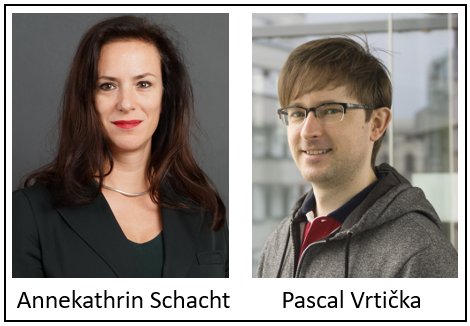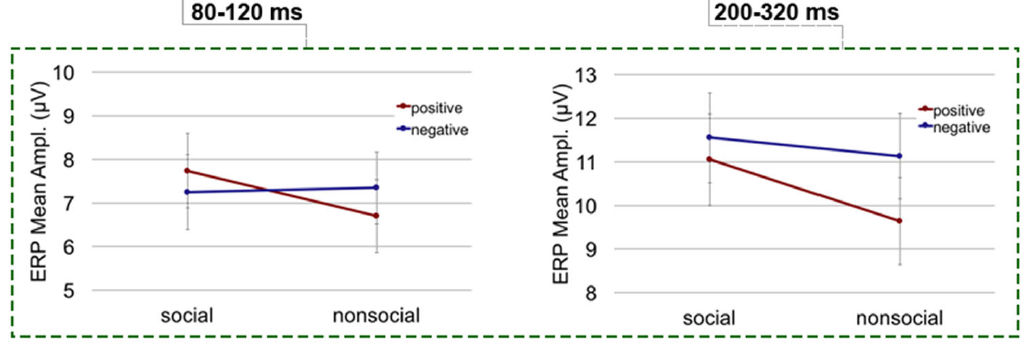Humans are social beings. This has numerous implications: For example, we know what others know or can know, and so we do not use gestures to communicate when we talk on the phone. We are sensitive to social norms, and we typically conform with those norms—even if they are communicated by a computer. We are so social that some theorists have even proposed that the reason we have evolved such large brains is to manage our unusually complex social systems (rather than to do math).
It is not surprising, therefore, that there has been increasing research interest in the “social brain” during the last few decades, giving rise to a field of inquiry known as “social cognitive affective neuroscience” that even has its own journal.
A guiding assumption of this research has been that people may be highly sensitive to the mere presence of social information. There has been empirical support for this assumption, and it is now known that social information preferentially activates certain brain areas (amongst others the occipital cortex/fusiform gyrus, amygdala, superior temporal sulcus, insula, and orbitofrontal cortex,).
In addition, there is evidence from a functional magnetic resonance imaging (fMRI) study that the social (vs. nonsocial) dimension interacts with the emotional valence of stimuli. Specifically, there is no activation difference between social and nonsocial information for positively-valenced images (e.g., two people embracing), whereas there is a significant valence effect for nonsocial content (negative images such as two people fighting elicits greater activation than a positive image).
An interesting remaining question concerns the temporal interaction between the processing of social (vs. nonsocial) information and its emotional valence and content. For example, do we process emotional valence before we realize whether a scene is social or nonsocial? Or might it be the other way round? Or might the processing of social content and emotional valence be interactive even very early on during processing?
A recent article in the Psychonomic Society’s journal Cognitive, Affective & Behavioral Neuroscience examined this question. Researchers Annekathrin Schacht and Pascal Vrtička employed an event-related brain potential (ERP) methodology which provides excellent temporal resolution, albeit at the expense of difficulties in the localization of activation in subcortical brain structures.
Researchers Annekathrin Schacht and Pascal Vrtička employed an event-related brain potential (ERP) methodology which provides excellent temporal resolution, albeit at the expense of difficulties in the localization of activation in subcortical brain structures.
Schacht and Vrtička presented participants with images that were either social or nonsocial, and that were emotionally either positive, neutral, or negative. The two dimensions were fully crossed to create 6 conditions overall. The researchers created 120 meaningful images to operationalize those 6 experimental conditions (thus there were 20 images of each type). An additional 120 images were created by scrambling the original set. Both sets were interleaved and presented in a random order. The participants’ task was to decide for each image whether it was intact or scrambled.
To confirm that neither emotional valence nor arousal differed between the social and nonsocial pictures, Schacht and Vrtička examined participants’ ratings of those attributes. The results are shown in the next figure and confirm that emotionality did not differ between social vs. nonsocial stimuli, but showed the expected differences between positive, neutral, and negative.

The main emphasis during analysis was on brain activity. (Accuracy on the task was in excess of 99% and there were no response-time differences between conditions.)
Schacht and Vrtička performed separate analyses for different time bands of the ERPs. Conventionally, the brain activation that is observed in response to a stimulus can be divided into P100 (within 80-120 ms of stimulus onset), EPN (200-320 ms), P300 (320-420 ms), and LPC (420-620 ms). The results revealed interactions between emotionality and social (vs. nonsocial) content for the P100 and EPN band. The pattern is shown in the figure below, for P100 on the left and EPN on the right:

For the P100, the interaction was driven by a larger amplitude for social as opposed to nonsocial images that were emotionally positive, and the absence of that difference for negative images. For the EPN, the interaction arose for the same reasons, although this time the amplitudes for negative images were higher overall, which eliminated the cross-over seen for P100. For the remaining two bands, P300 and LPC, the interaction fell far short of significance.
The next figure shows the pattern for all 4 temporal bands together, this time also including the emotionally neutral stimuli:

The overall pattern of results permits several conclusions. First, it is clear that the social (versus nonsocial) dimension of images is evaluated early on during visual processing. Schacht and Vrtička take this to imply that
“social content therefore likely represents a unique stimulus dimension that is appraised during one of the first of a series of relevance checks.”
Second, early on in processing the emotional valence of a stimulus also matters, with a processing advantage of particularly positive social information. Notably, this advantage was obtained with a task that involved no emotional or social goal—the nature of the stimuli was completely irrelevant to the judgment participants had to make (whether or not the image was scrambled). The fact that those effects nonetheless emerged suggests that they are the result of relatively automatic and autonomous processes.
Third, later on in processing there was a distinct and persistent advantage for negative information compared to positive information. According to Schacht and Vrtička,
“particularly negative information—regardless of its social or nonsocial content—is assumed to be highly relevant to the human organism because it represents a potential threat to the bodily integrity as well as psychological wellbeing. Accordingly, the rapid appraisal of negative information appears crucial for triggering defensive behavior, associated psychophysiological responses, and emotional feelings as a means of protection.”
If rapid emotional appraisal of stimuli affords a means of protection, perhaps the same can be said of social stimuli. After all, people who are interacting with each other in a positive manner—for example by embracing—are more likely to offer refuge from a threat than nonsocial bars of chocolate or ice cream cones, however enticing they may be.
Psychonomics article highlighted in this post:
Schacht, A., & Vrtička, P. (2018). Spatiotemporal pattern of appraising social and emotional relevance: Evidence from event-related brain potentials. Cognitive, Affective, & Behavioral Neuroscience, 18, 1172-1187. DOI: 10.3758/s13415-018-0629-x.
